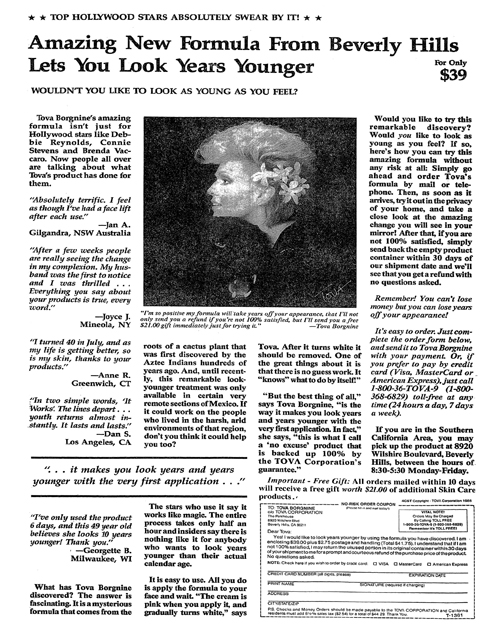 |
|||||
A great product always beats great waffle The first thing to remember in the hierarchy of success is not your brilliant copy. It is your product and its positioning. The phrase that comes to mind is “A gifted product is mightier than a gifted pen.” I quoted David Ogilvy as saying that and he told me he never said it at all. Well, if he didn’t, he should have - and if I did, I’m very pleased with myself. A great product or one with unique positioning can get away with abysmal marketing. A dud product or one poorly positioned will find it very hard to succeed, no matter how brilliant the marketing. What you do matters infinitely more than what you say. To give a relevant example, by and large marketing for computers has been driven by product improvements, and the marketing has been a side show. Apple is perhaps the only exception. To illustrate just how bad computer marketing has been, ask yourself this. How much has your computer manufacturer done to recognise you as a customer and capitalise on the fact that you are customer? Not much, if anything, right? I bet they’ve never even written to you personally at all. Yet that is very, very basic marketing. Anyhow, the first great thing about this ad is that Tova Borgnine was, at that time, a name to inspire curiosity – her husband was a household name. So regardless of the appeal of the product one part of the battle to gain attention was won instantly. Now look at the two most important factors in almost any ad: headline and picture. Nothing clever about either here. They are as safe as houses. A picture of Tova – women look at women. “Amazing and new” – words that increase readership. Beverley Hills. Hollywood. Look younger. Plain language “Hollywood stars swear by it”. Not a wasted word. And a question mark at the end of the subhead – a way to keep you reading. What matters most? What matters most after the headline and picture combination? The caption to the picture. And look how hard this works! It’s the guarantee – with an extra incentive to try. Then the copy drives straight into battle. Not a wasted word. Names of Hollywood stars. Testimonials from ordinary people. Frankly, there is hardly a single detail here that does not teach a lesson. Study it and look at some of the magical touches There’s the mysterious stuff about Mexico. The mention of the arid climate (so right when talking about skin). The bit about the product changing colour after it’s applied ... shadows of witchcraft. And the word “magic” which appeals to the oldest of human suspicions. It “knows” what to do by itself. Lots of stuff in quotes, too. If you study best selling paperbacks you’ll see that they have lots of dialogue – it increases readership. And there are the constant variations on that basic thought: look younger (I counted 8) – with that wonderful no-risk line: “You can’t lose money, but you can lose years off your appearance”. Notice the terms of the guarantee: send the empty packet back and we’ll still give you a refund. That is a perfect example of the well-known line of Claude Hopkins: make an offer so good only an idiot would refuse it. Nowadays they call it “risk reversal – just a fancy word for something as old as the hills. And notice that the reader is asked to send the order to Tova herself. If you note every single thing you see in this ad, you will learn a lot. And if you apply them you will achieve a lot. The advertiser’s greatest challenge James Webb Young, the great Creative Director of J. Walter Thompson in its early days remarked that the greatest problem of the advertiser is to be believed. And today I saw a report that only between 6% and 9% of customers believe that advertisers tell the truth. So one thing to notice about this ad is what an extraordinary proportion of the copy is directly or implicitly a testimonial. But I would never have guessed what, in Gary’s view, increased response by a good 50% - something which was, again, a way of instilling belief. It was this line: If you are in the Southern California Area, you may pick up the product at 8920 Wilshire Boulevard, Beverly Hills, California, between the hours of 8:30 to 5:30 Monday to Friday. As Laurence Bernstein, The King of Swipe comments: “There were no customer lines on Wilshire Boulevard. Almost no one showed up to pick up the product in person. What this paragraph did was strengthen the association between the product and its place of origin — Beverly Hills — a place that’s loaded with connotations of wealth, beauty and luxury. More importantly, it persuaded even the most skittish prospect that, yes, this is a bona fide product from a legitimate company…so much so that they invite you to their Beverly Hills location to pick it up.” What can you learn from this ad? Quite a few things:
And that I could never write this stuff as well as Gary did.
-Drayton Bird http://www.draytonbirdcommonsense.com P.S.The book I couldn't remember was How I Learned The Secrets Of Success In Advertising. You can get it on Amazon - as I shall.
| |||||

